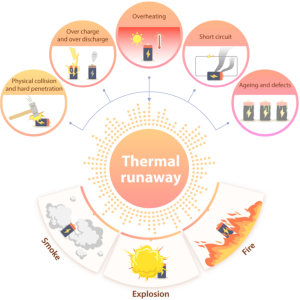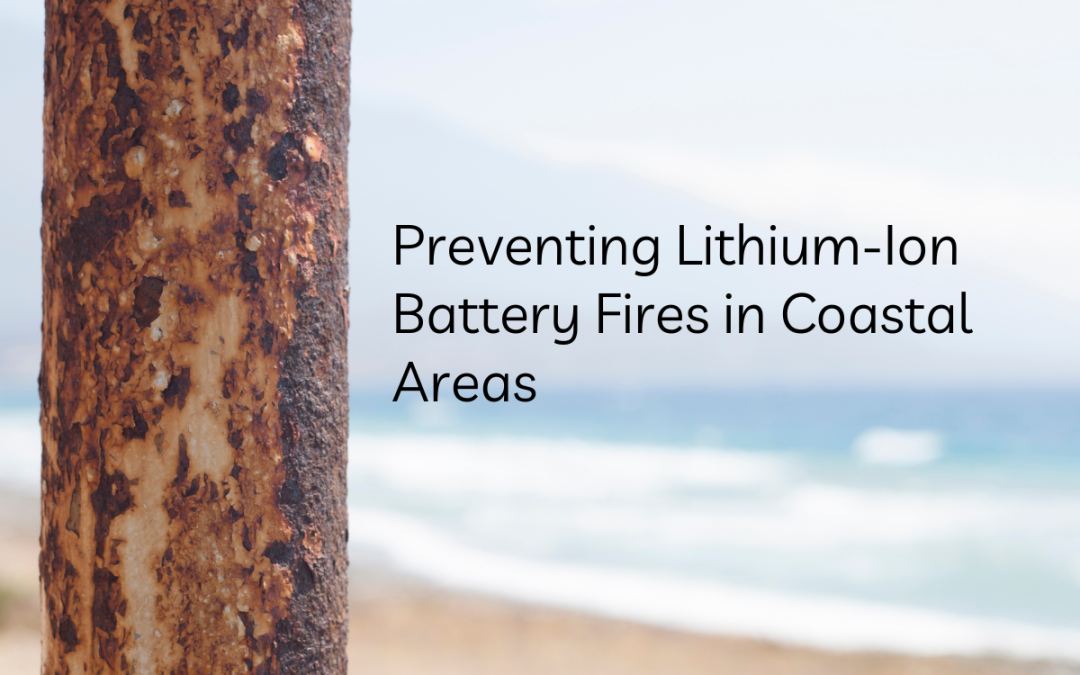Understanding the Importance of the Lithium-Ion Battery
Today, the lithium-ion battery is widely relied on as a power source. This energy-dense and efficient battery powers our phones, laptops, inverters, electric cars, and the like.

Lithium-Ion batteries
Factors Contributing to Lithium-Ion Battery Fires in Coastal Areas
Overcharging, corrosion, physical damage, or exposure to high ambient temperatures can cause a lithium fire to break out. This is particularly prevalent in coastal towns where high humidity and salt air accelerate battery degradation.

Coastal town with high humidity and fog
The Science of Thermal Runaway and Fire Risk
Grasping the relationship between battery temperature and fire risk is paramount when keeping safety in mind. Science reveals that thermal runaway is a process where an increase in temperature changes the conditions in a way that causes a further increase in temperature. This can lead to a self-sustaining fire or explosion.
Understanding Thermal Runaway in Lithium-Ion Batteries
In lithium-ion batteries, thermal runaway can occur when the battery’s internal temperature rises too high. This can cause the electrolyte to break down and release heat, further increasing the temperature.

Diagram showcasing thermal runaway process
The Ignition Point and Damage Potential
The ignition point at which a lithium-ion battery fire occurs is around 150-200°C (302-392°F). However, this can vary depending on the specific battery chemistry and design. It’s important to note that even temperatures below this range can cause damage to the battery, reducing efficiency and lifespan while increasing the risk of fire over time.
Preventive Measures for Lithium-Ion Battery Fires
Preventing lithium-ion battery fires involves a combination of careful design, regular maintenance, and proper use. Monitoring systems can help detect signs of overheating, alerting users to take action before a fire starts. Fire suppression techniques and safety practices must also be in place to manage a battery fire once it starts.
Safety Provisions and Training for Coastal Towns
Not only homeowners but managing agents in coastal towns may need to include specific provisions for lithium-ion batteries to ensure the greater safety of their residents. Training for first responders dealing with lithium-ion battery fires is paramount, as these fires can behave differently from other types of fires.
Public Awareness Campaigns and Fire Safety Solutions
Public awareness campaigns can play a key role in mitigating the devastation of lithium-ion battery fires. It is imperative to fight a lithium-ion fire with an appropriate lithium-ion fire extinguisher.
Hazpak offers a range of lithium-ion fire suppressant units and durable special fire extinguisher covers in green with appropriate signage to easily distinguish them from regular firefighting extinguishers. Contact Hazpak for your lithium-ion fire safety requirements.

Hazpak Gel Lithium-ion extinguishers

